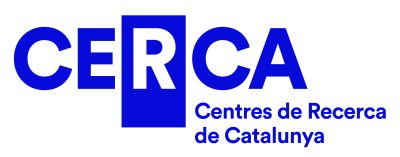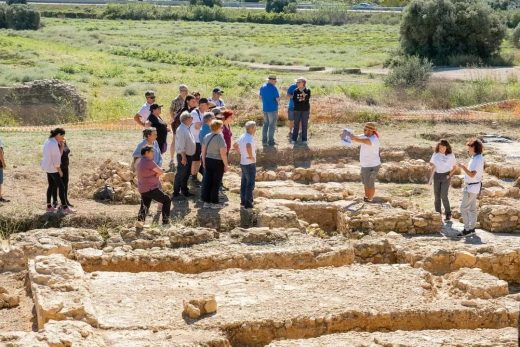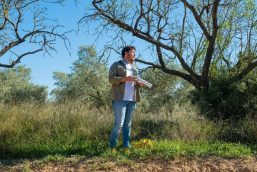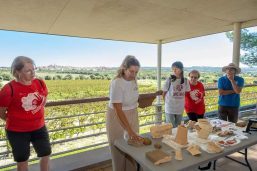
Over fifty people joined the guided tour of the Roman villa of Mas dels Frares on September 28th.
Last weekend, more than fifty people participated in a guided tour of the Roman villa of Mas dels Frares, organized in collaboration with the Constantí City Council and the Cercle Cultural, Recreatiu i Esportiu de Constantí. The event coincided with a traditional horse-drawn cart parade, “Tres Tombs.”
The tour was led by Francesc Rodríguez, a researcher from the Late Antiquity team, who directed the 2024 excavation works at the site. He explained the archaeological finds and the historical context of this Roman site, which has recently been the focus of research as part of a four-year project (funded by Generalitat de Catalunya).
Itziar Gutiérrez and Lluna Magarolas, team members, and some URV students who participated in this summer’s excavation, also contributed to the explanations (see related news).
The walk also highlighted other archaeological sites in the area, such as Mas d’en Bosc, a project closely linked to the research at Mas dels Frares. However, current findings do not yet allow for a direct connection between the two sites.
Mas d’en Bosc is a private property located nearby, under the AVE high-speed rail line, where the research team recently conducted a cleaning campaign on structures initially excavated in the 1970s and a geophysical survey using ground-penetrating radar, providing new data on the site.
The new data obtained at Mas d’en Bosc will enable further understanding of the agricultural and productive network in the area.
Lluna Magarolas, a graduate of the MACA master’s program (ICAC-URV-UAB) and recipient of a PIR grant, coordinated the cleaning campaign at Mas d’en Bosc as part of her master’s thesis (El centre productor vitivinícola de Mas d’en Bosc (Constantí, Ager Tarraconensis)). The recent findings have provided valuable information about the region’s wine production activities, drawing parallels with other Roman villas, such as Centcelles. However, definitive conclusions cannot be reached until the area is excavated.
Magarolas highlighted:
Although we haven’t conducted archaeological excavations at Mas d’en Bosc, combining old data with new methodologies, such as the use of ground-penetrating radar, has allowed us to reinterpret the site and deepen our understanding of its function as a wine production center.”
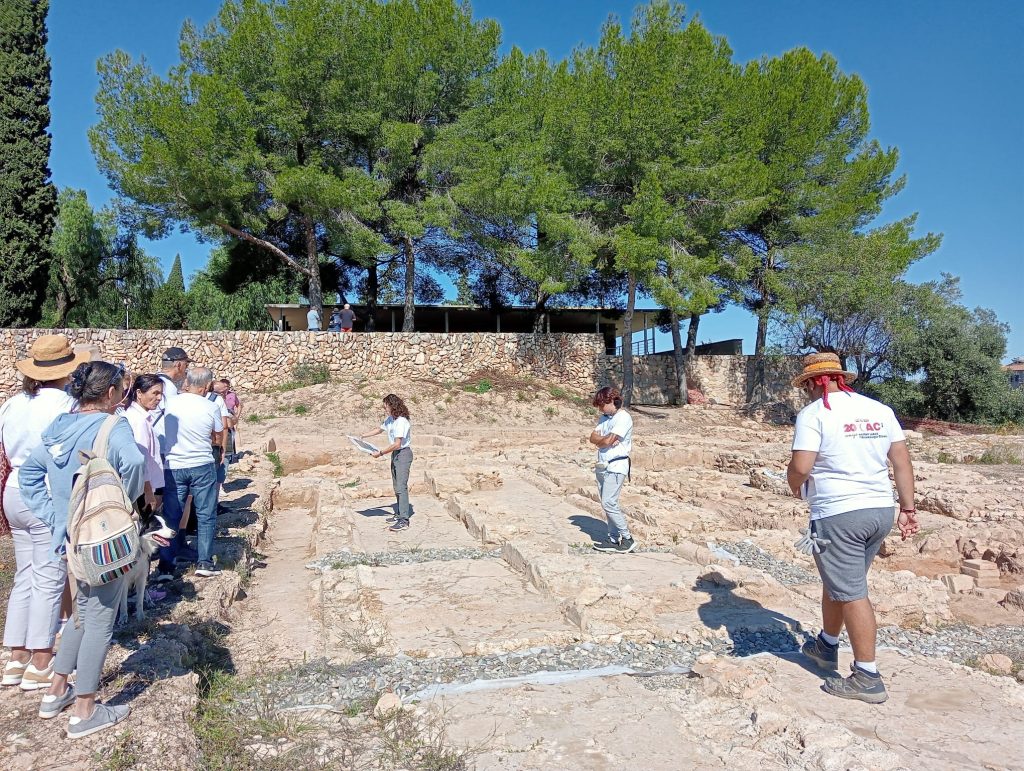
The research at Mas d’en Bosc is part of a larger project, Estudi i difusió de la vil·la romana de Mas dels Frares i el seu entorn (Constantí, Tarragonès), II Fase (CLT009/22/00033), which aims to understand the territorial organization and agricultural production in the Ager Tarraconensis area during the High Imperial and Late Republican periods.
As the four-year Mas dels Frares project and its surroundings near their conclusion next year, the research team is preparing new dissemination actions. These will include publishing several impactful articles on recent discoveries, such as the clam remains documented at the site and new data on Mas d’en Bosc, as well as organizing a seminar on the world of wine in collaboration with wine expert Maria Rueda.
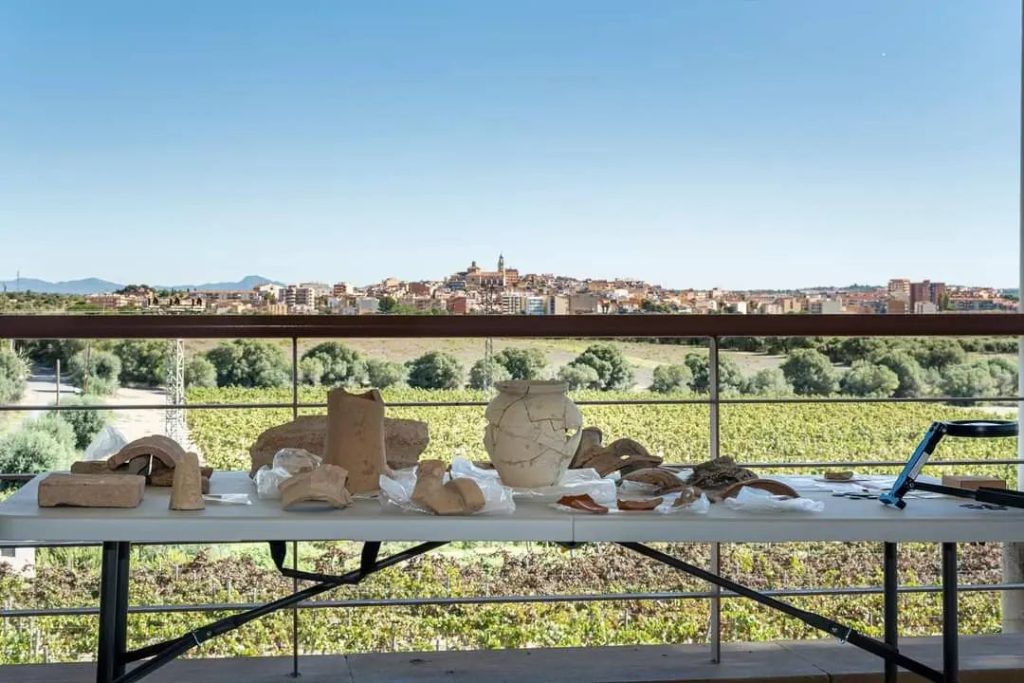
About the Catalan Institute of Classical Archaeology (ICAC-CERCA)
The Catalan Institute of Classical Archaeology (ICAC-CERCA) is a CERCA center established as a consortium in 2003 by the Government of Catalonia and the Rovira i Virgili University. It is a Catalan institution with an international scope, at the forefront of research and conservation of archaeological heritage. Its headquarters are located in Tarragona, a city recognized as a UNESCO World Heritage Site in the year 2000. Its researchers work to understand the past through the study of archaeological remains and promote the preservation of the historical legacy. We are CERCA!
For more information, visit www.icac.cat.
